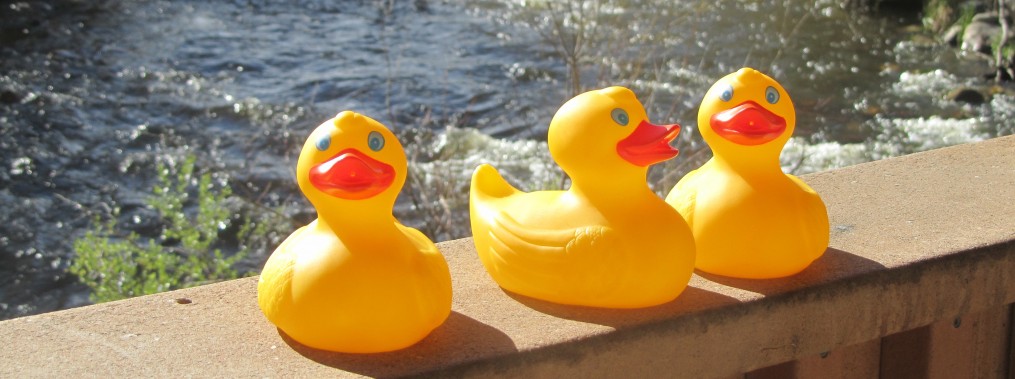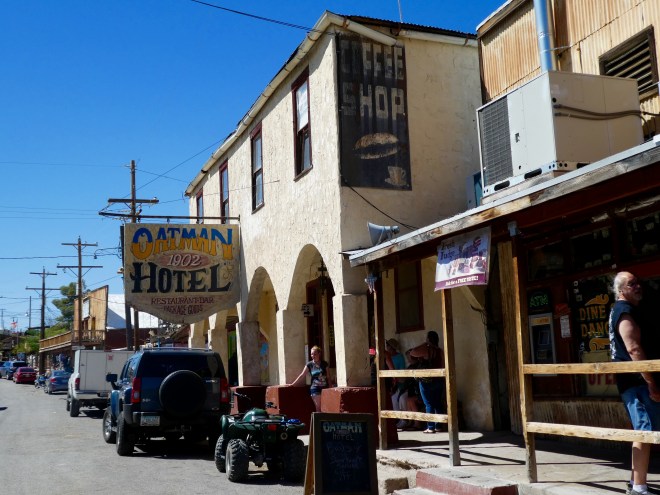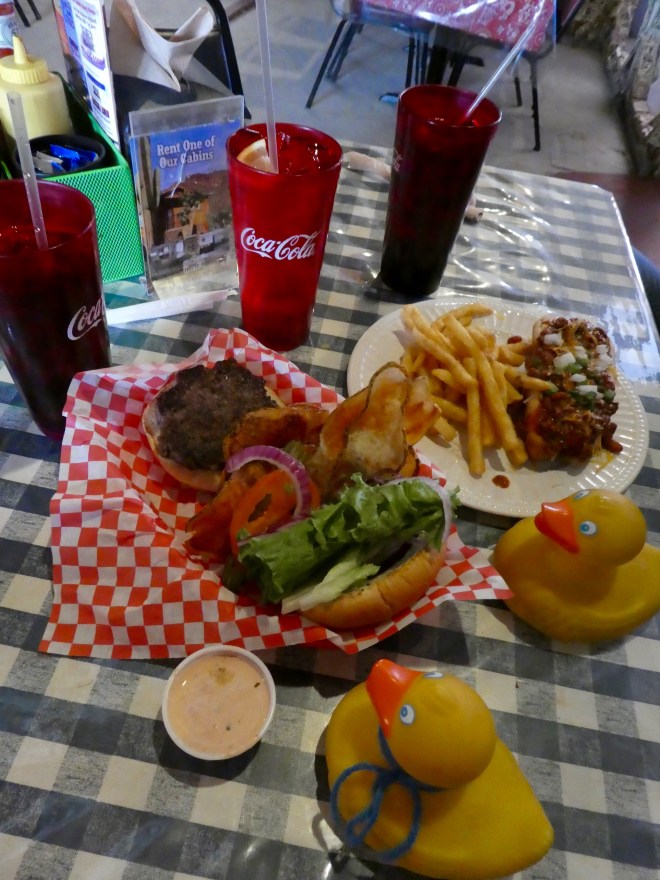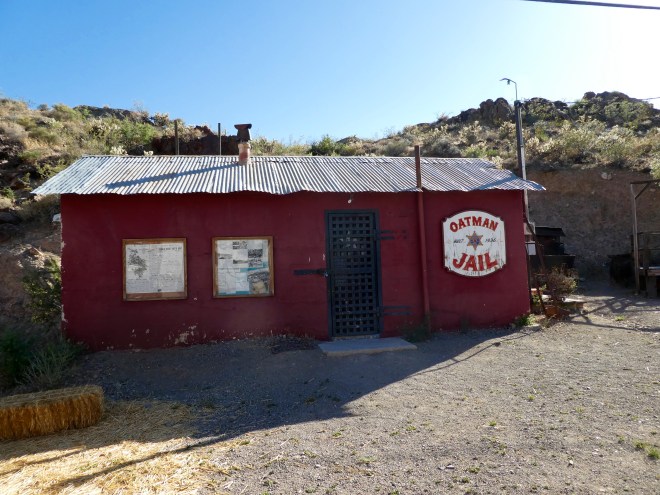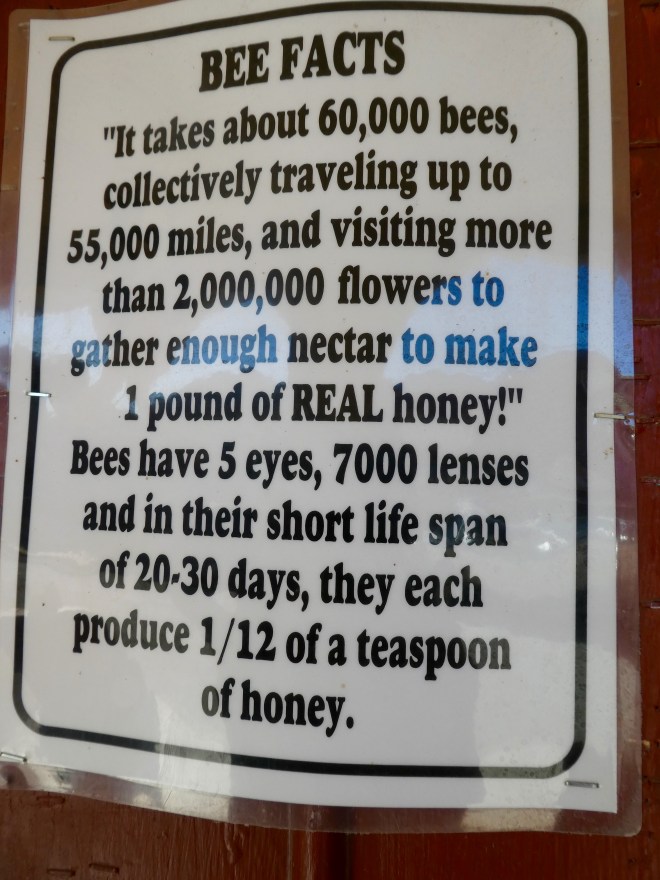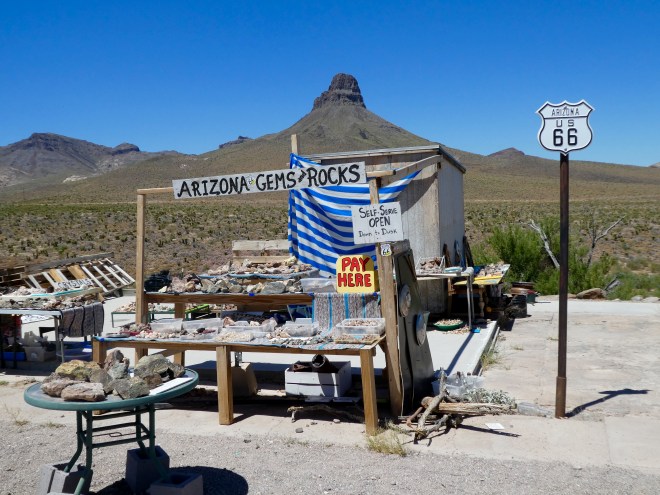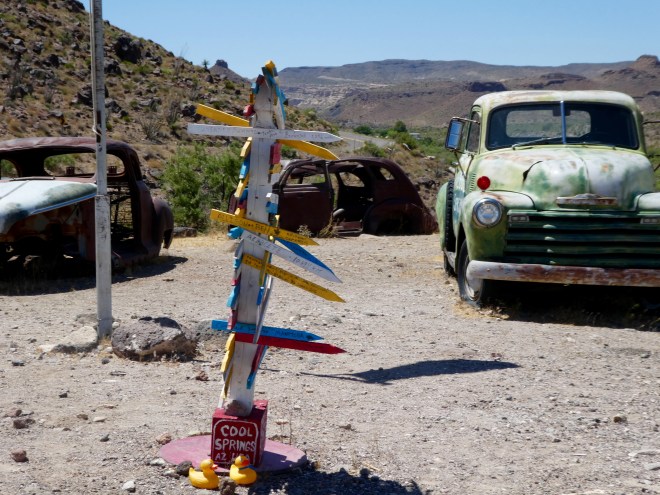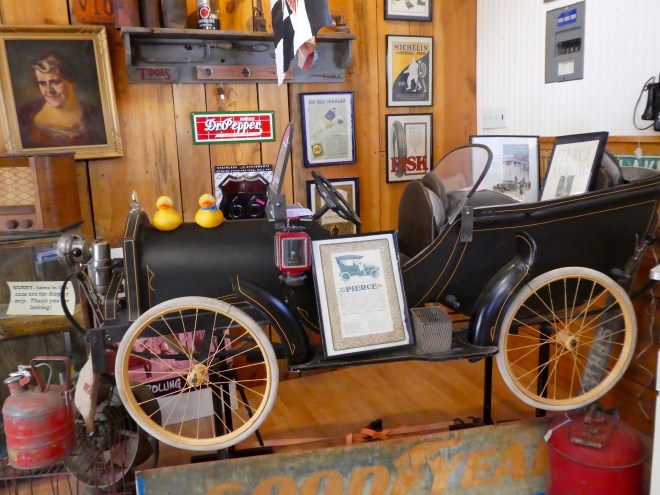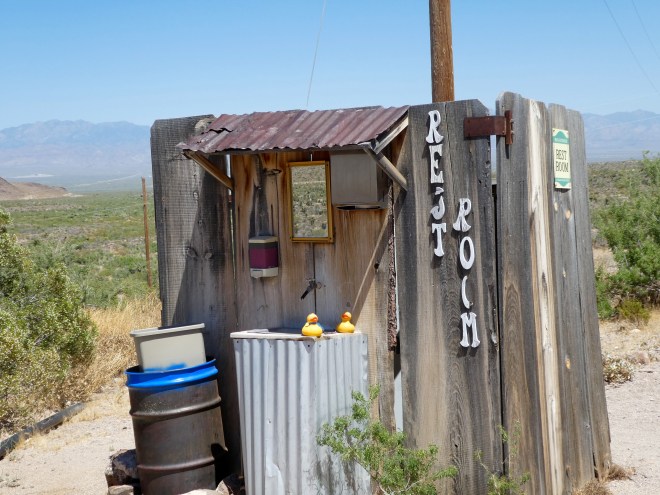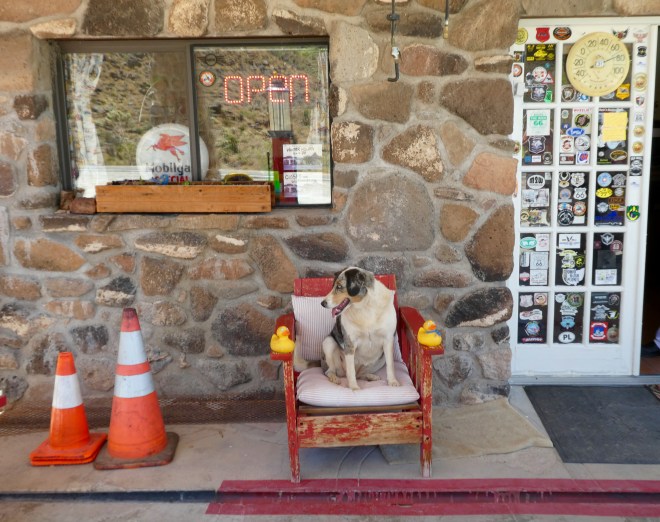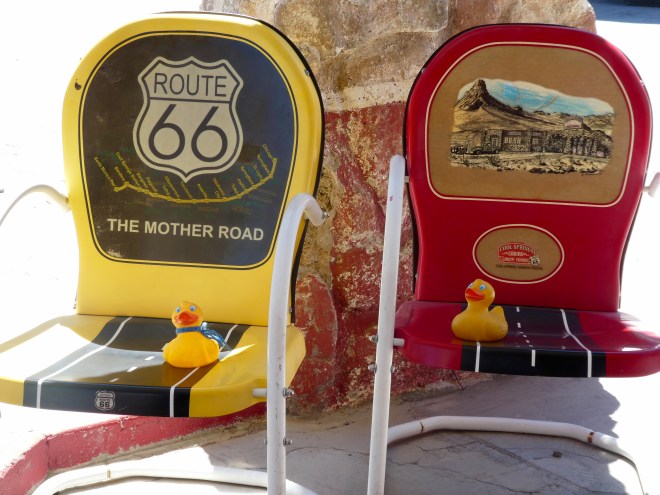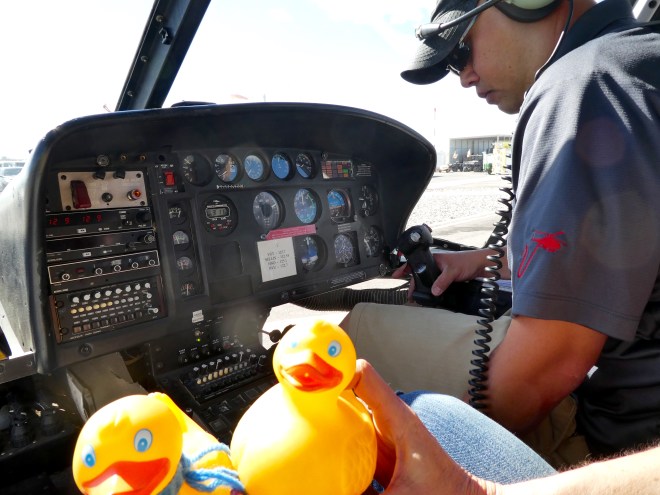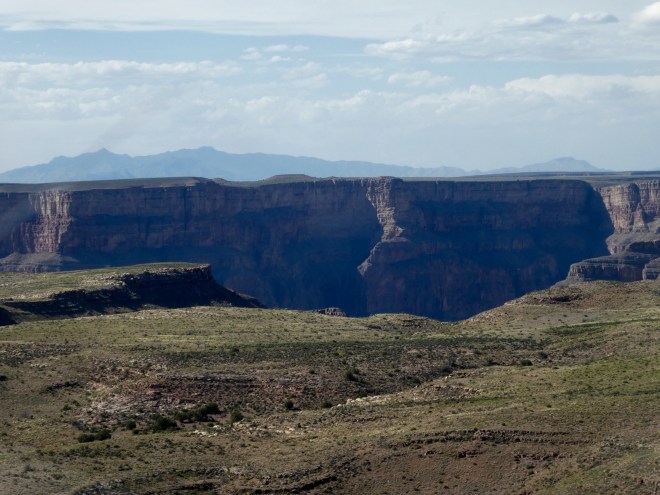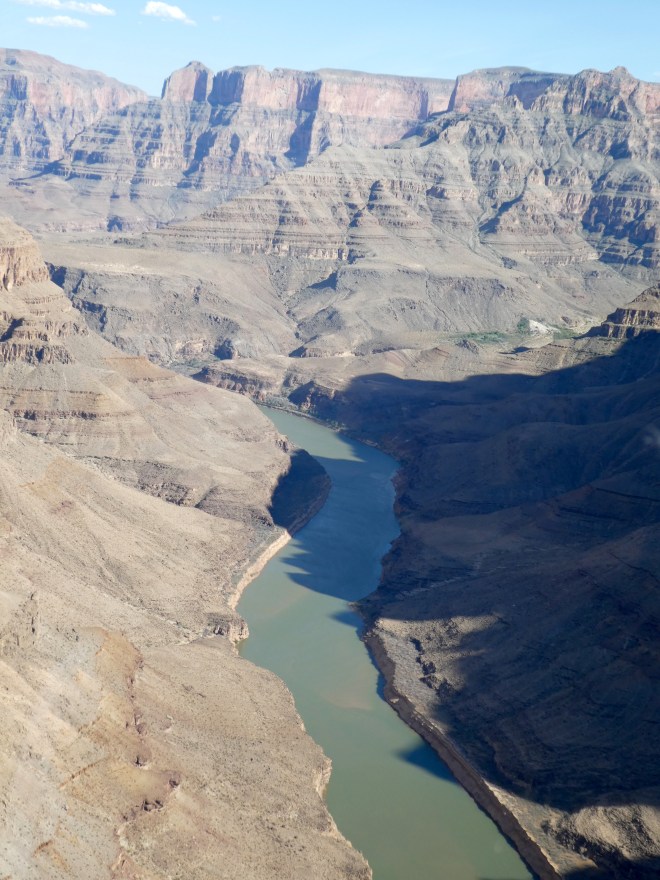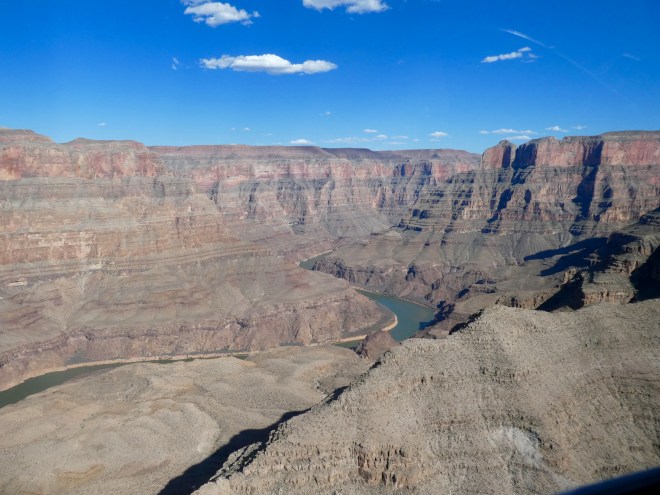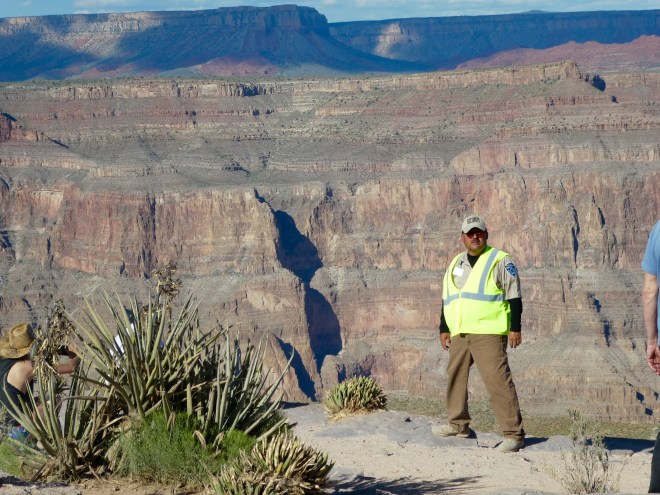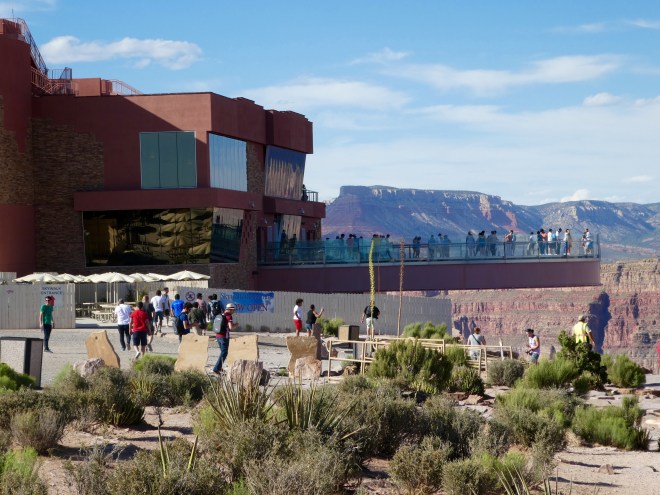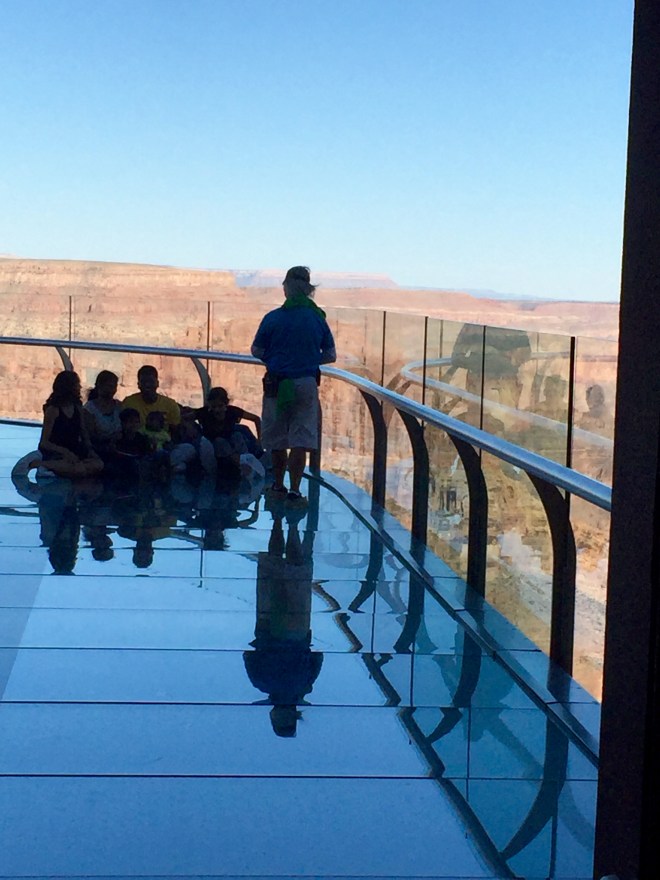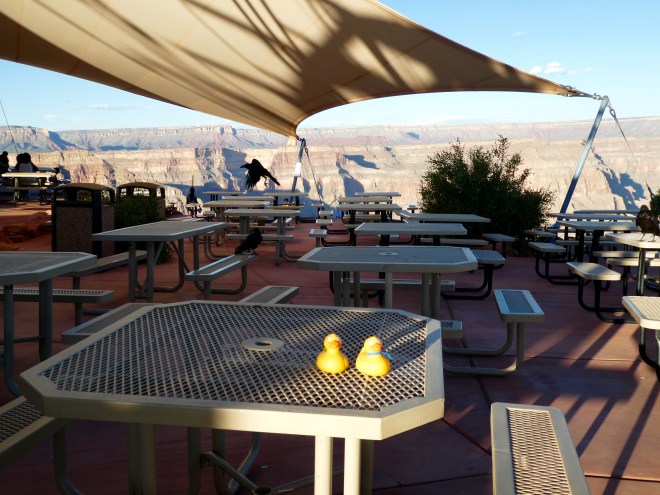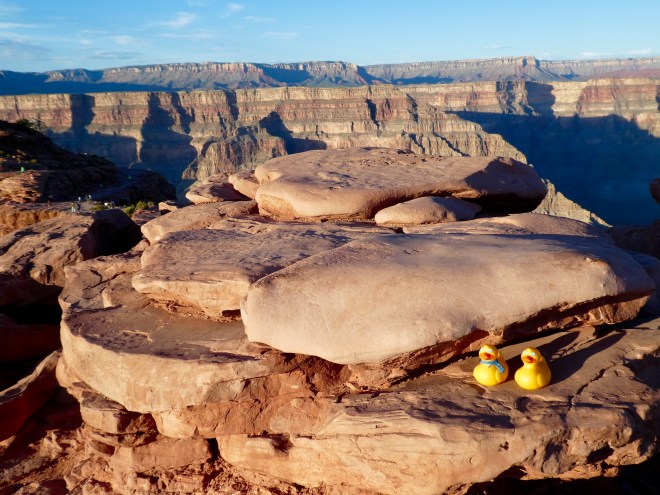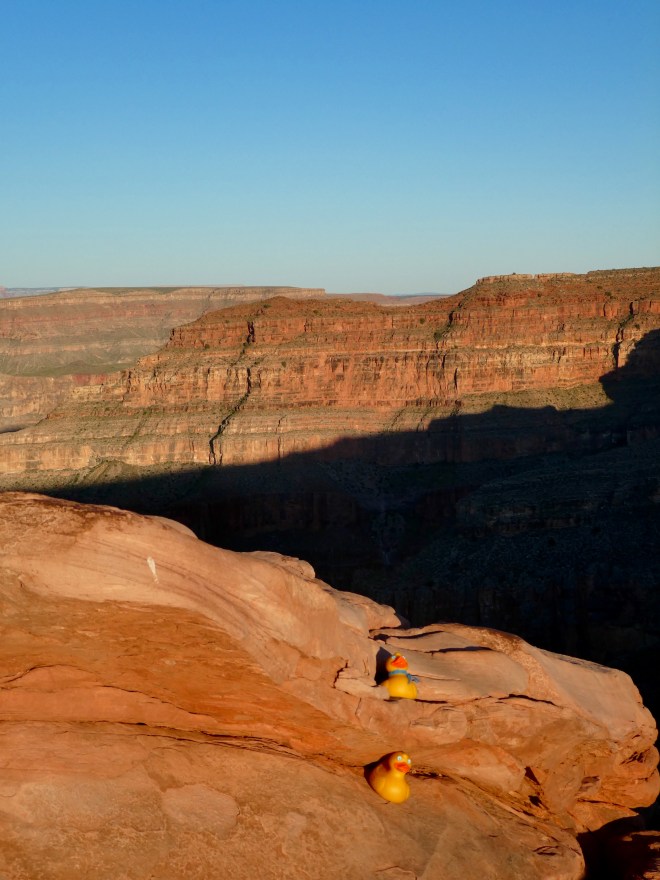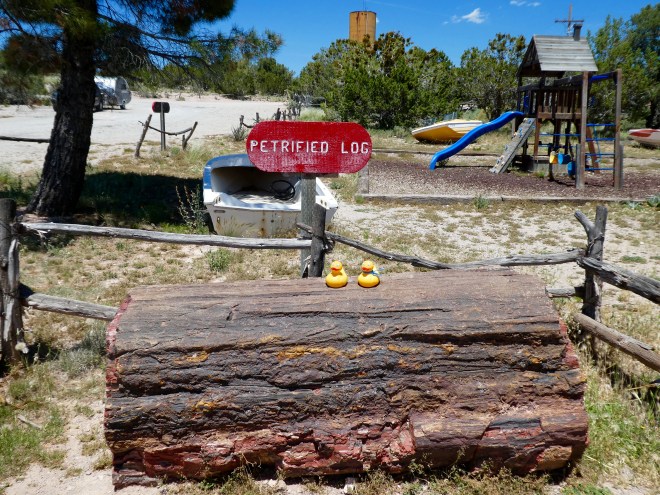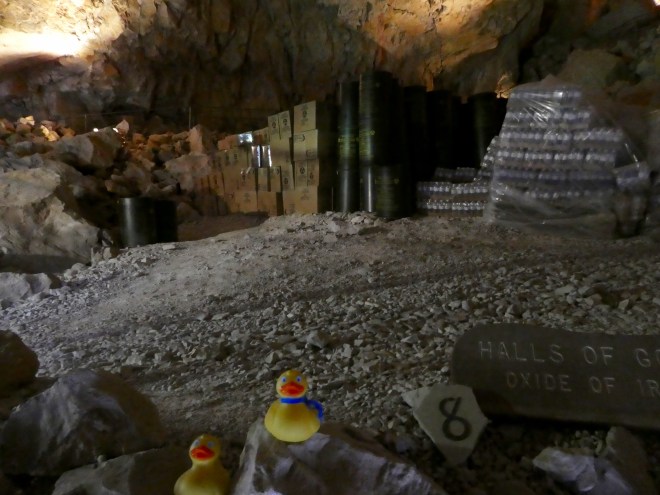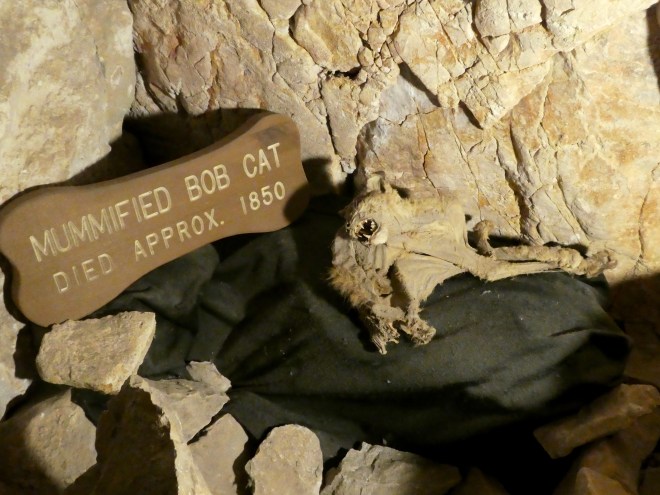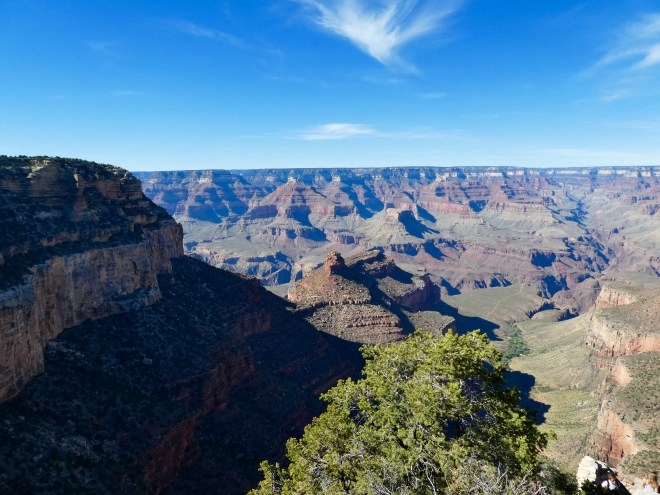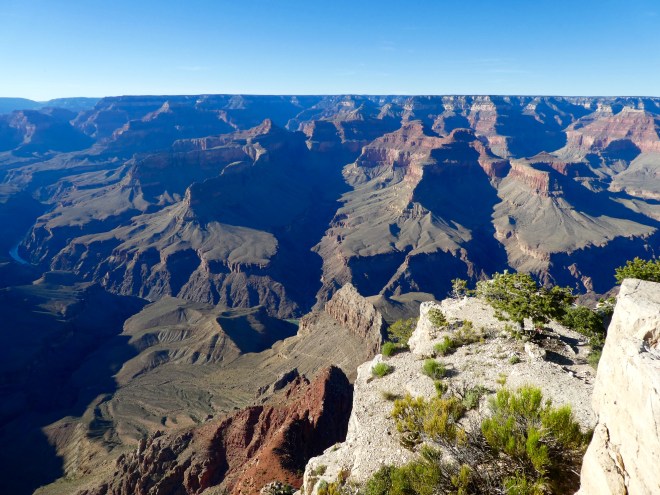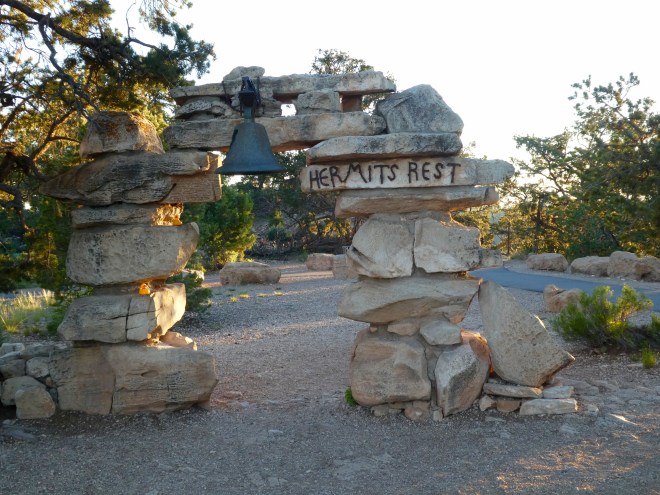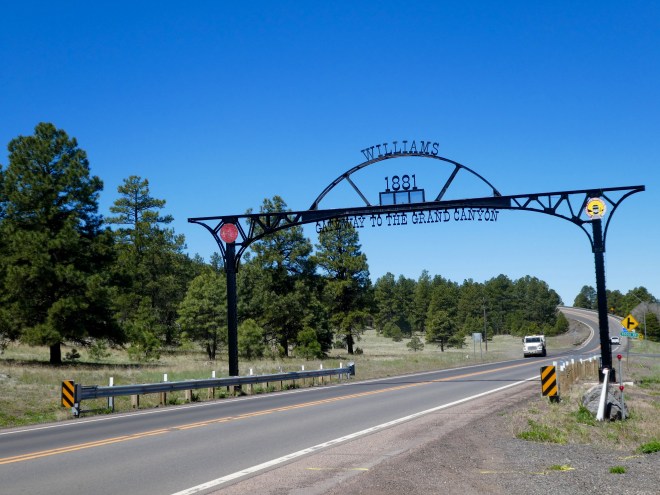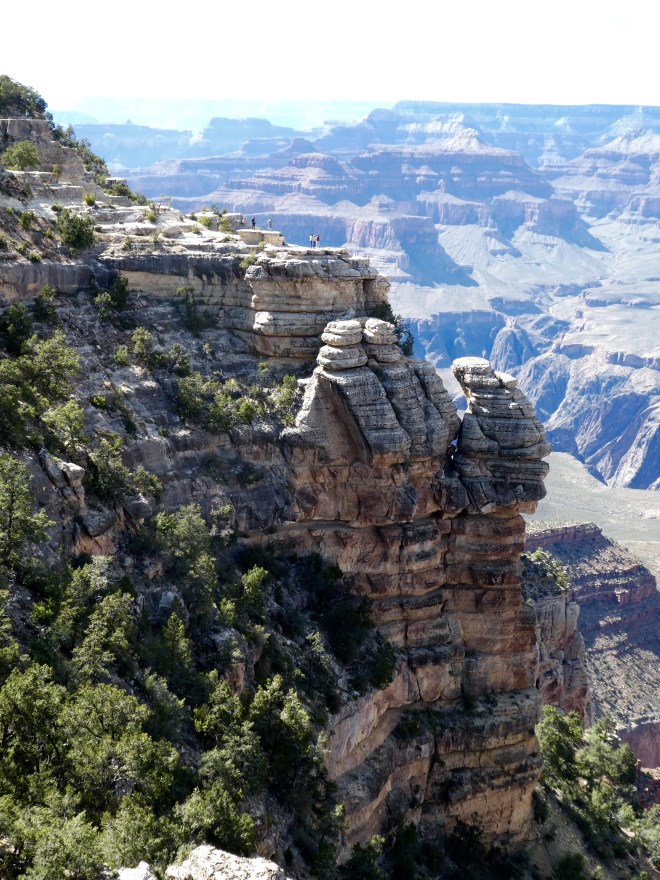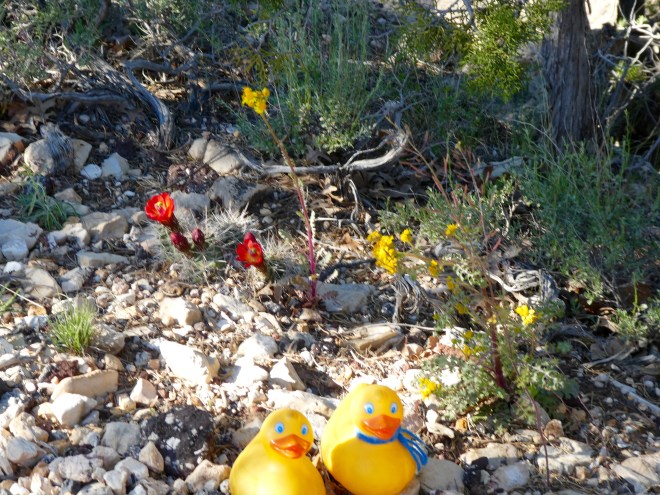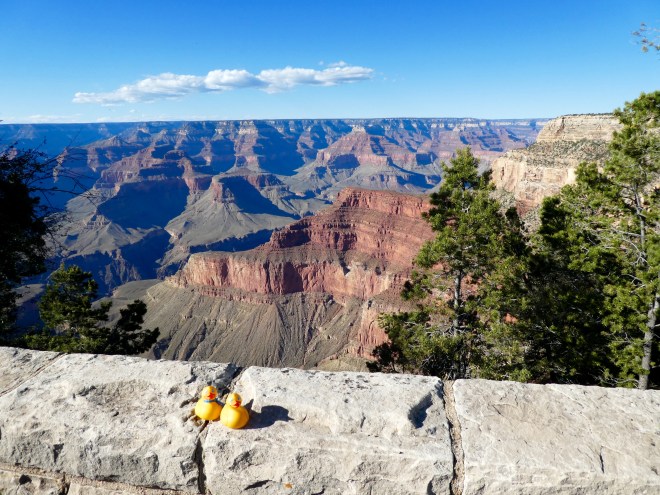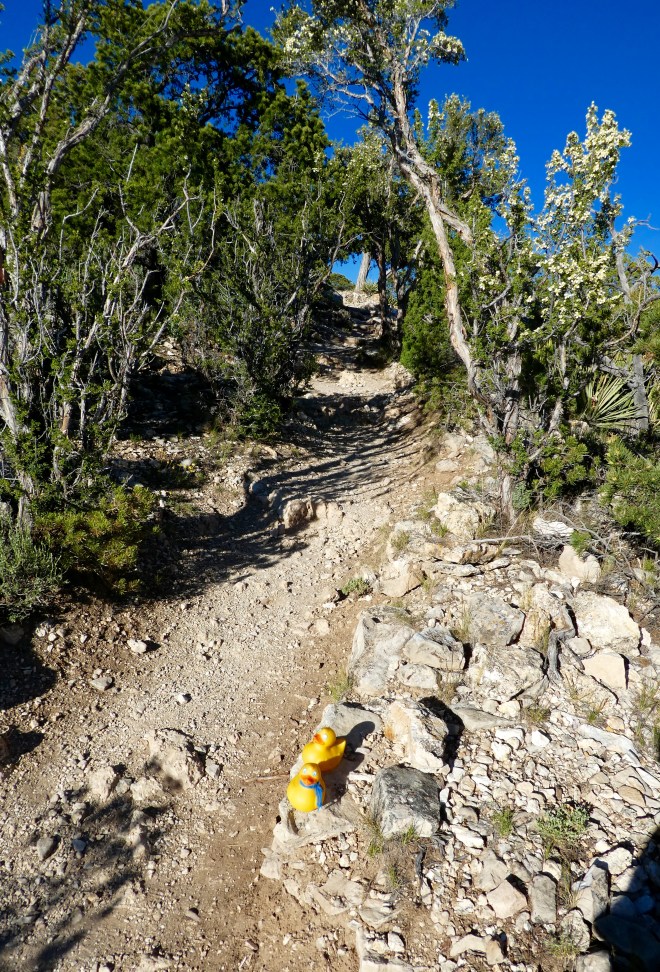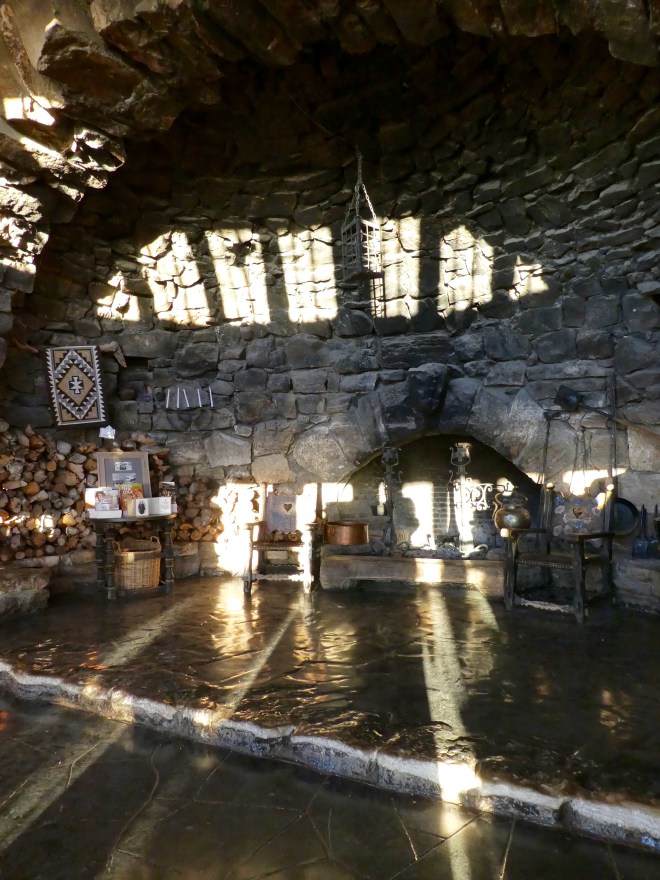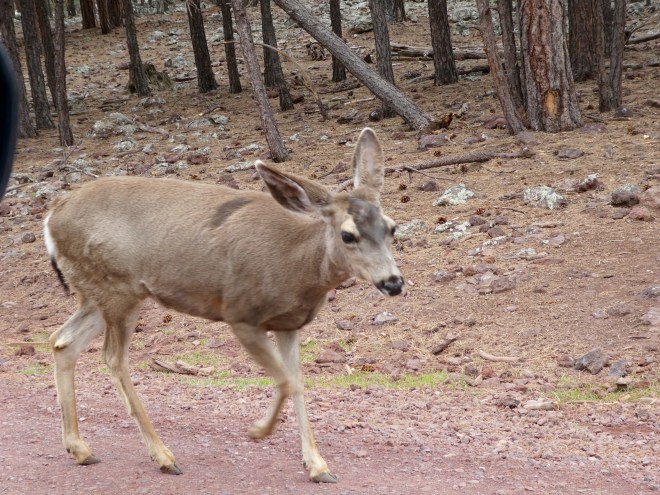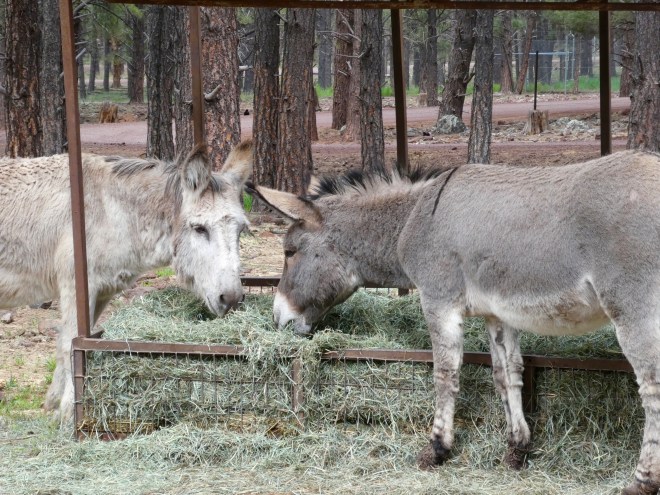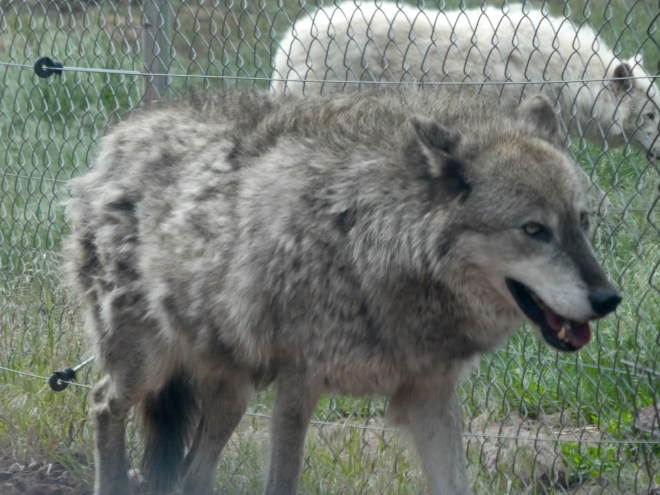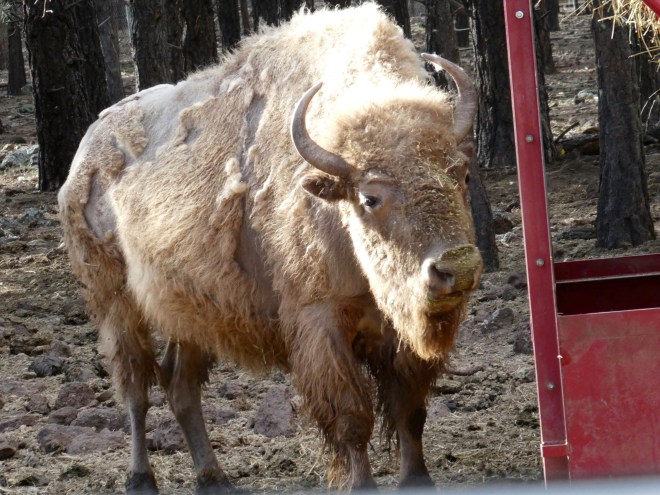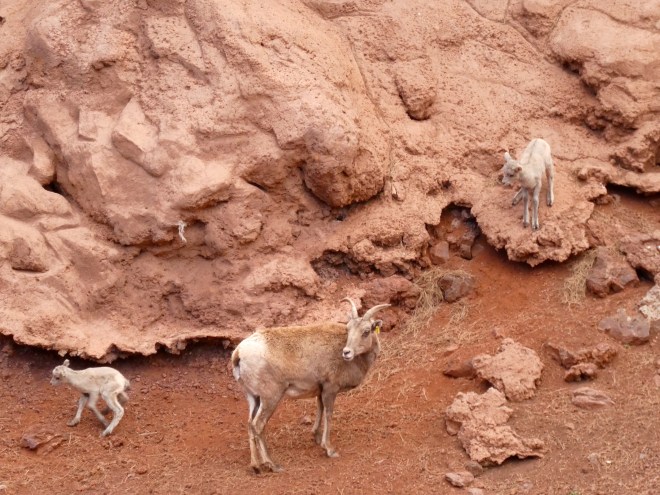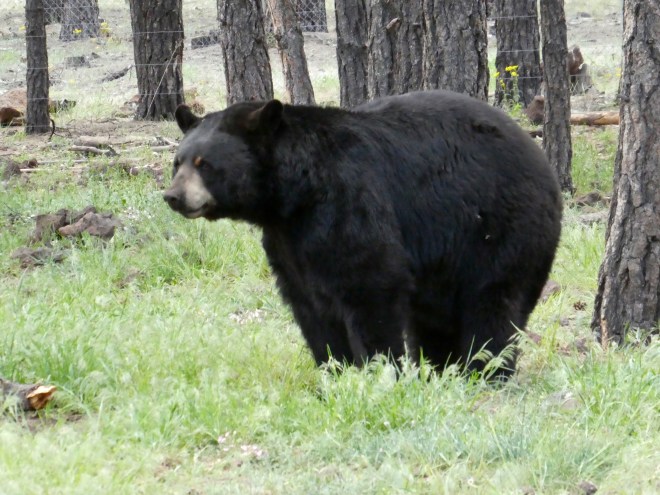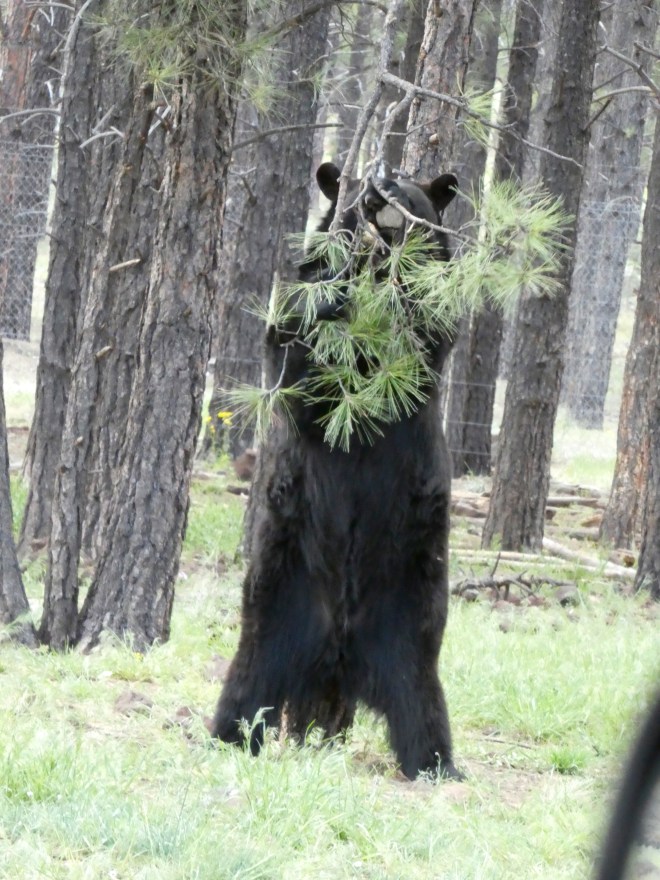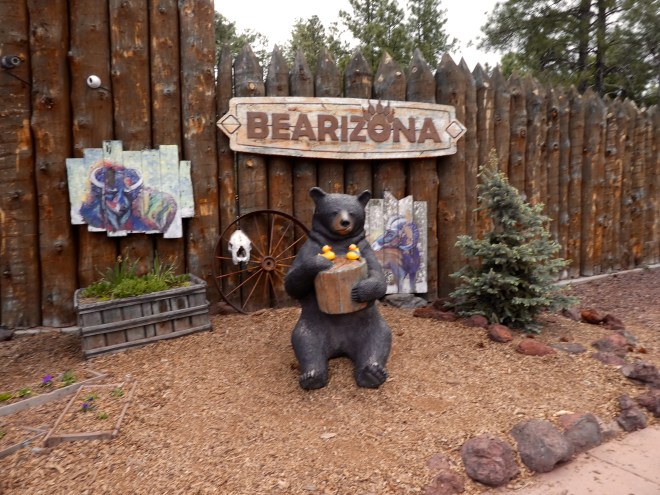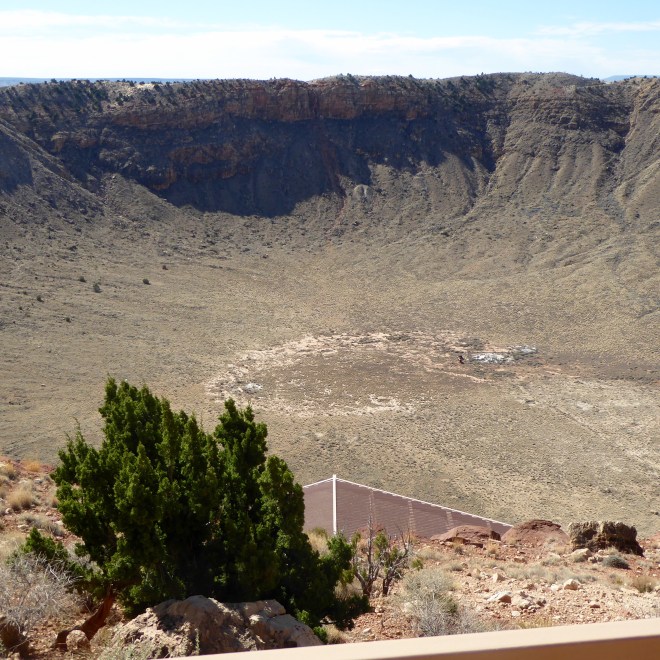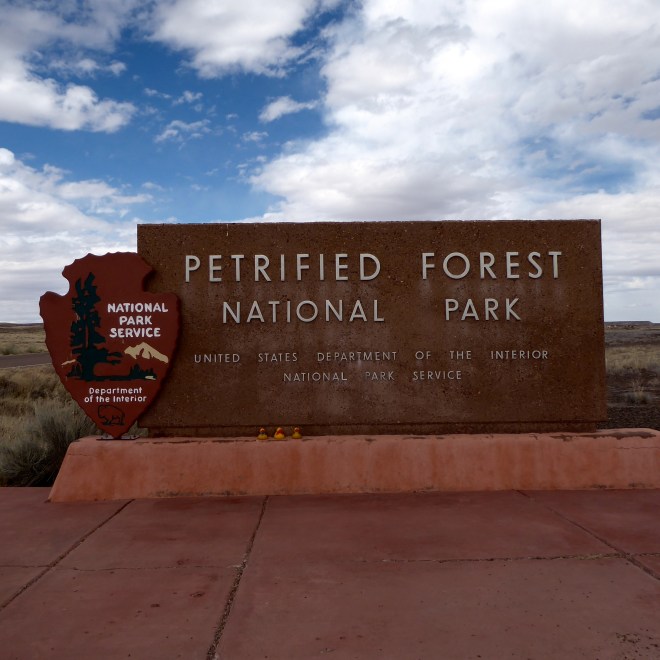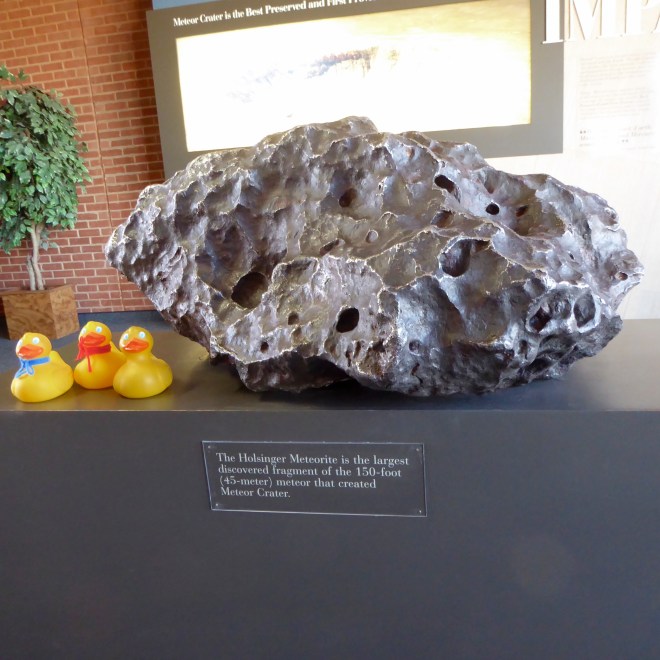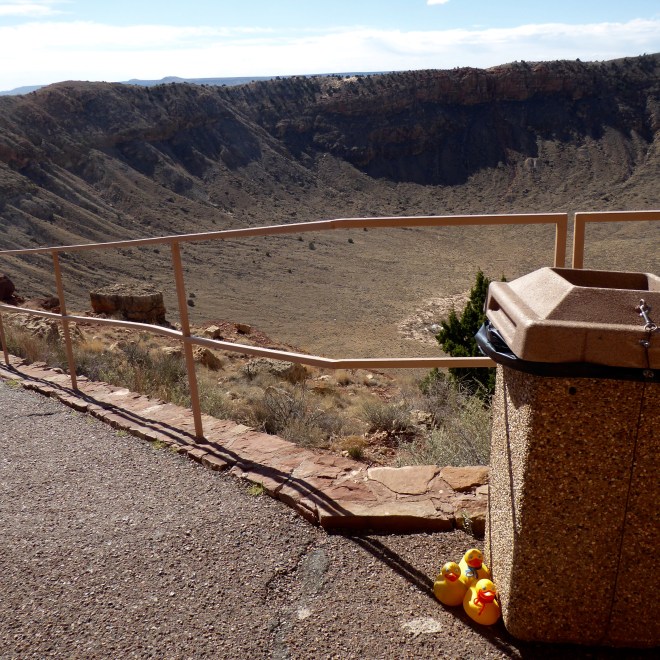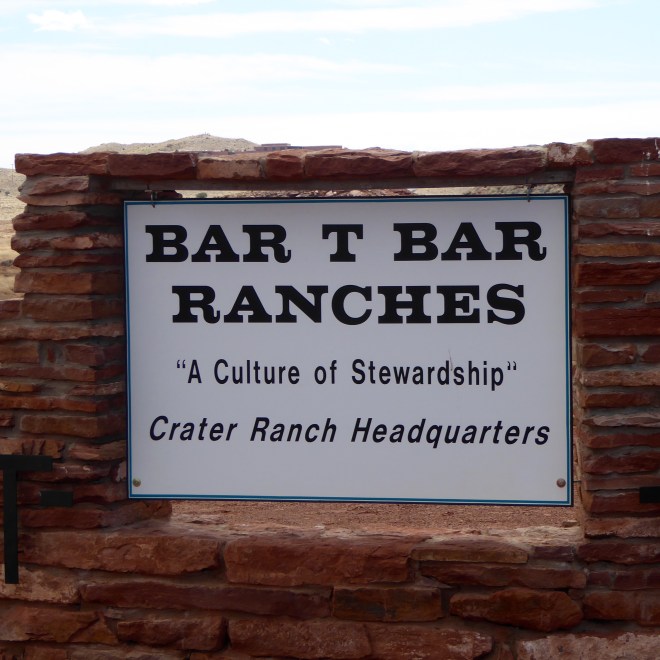Route 66 led us from Cool Springs, Arizona into Oatman, Arizona. Oatman was a gold mining town, but now this is a great tourist town–for humans, ducks, and wild burros.
Many stores sell burro food, so tourists and human residents do feed the burros. But be careful. We were told if there are more than 1 or 2 male wild burros, they may fight and you may get bitten or kicked. We were careful. Soapy’s mom is feeding one burro.
As you can see, this is a popular destination for motorcycle riders to stop also. Is he watching the burro, or Soapy’s mom? The names of the stores are different than the stores in Denver.
We feel like tourists in the Old West. And we are. This restaurant and saloon is named for Olive Oatman.
This town, Oatman, was named for her family. In 1851 the family was attacked by Tonto-Apache Indians. The parents and 4 children were massacred. Two girls, Olive, 16 and Mary Ann, 10 were taken captive. Lorenzo, a son, 14 was clubbed and left for dead. Lorenzo recovered and received help from the friendly Pima villages and found safety in Fort Yuma. After one year the girls were sold to the Mohave Indians. Mary Ann died. Olive was held captive near the town of Oatman until her release was negotiated in 1856, when she was reunited with her brother in Fort Yuma. The Indians and the white settlers had some rough times, and the town of Oatman was named for this family. Interesting, but we are happy those wars are now ended. We talked to this man and do you know what those things hanging down are?
Rattlesnake skins! He was very nice and suggested that we go the Oatman Hotel for lunch. After a little more looking, we headed there for lunch.
This hotel was built in 1902 and is recognized by the National Historical Society. A famous Hollywood couple, Clark Gable and Carole Lombard spent their honeymoon here on March 18, 1939. But let’s go in the restaurant and see what is so special.
Wow! There are $1.00 bills everywhere. Tourists visit the restaurant and often someone in the group puts a $1 bill on the table and everyone signs the money. The $1 is given to the waiter and the money is hung on the wall, on the counter, on the windows. Often a real person performs on this stage.
The stage is even covered with $1. The estimate of $1 bills is about $250,000. That is a lot of money. We love this place! When in Oatman, Arizona, stop in the Oatman Hotel for lunch, and add a $1 near your table or booth. It is fun. And, the food was really good.
Those large potato chips are Burro Ears. According to the menu they are homemade seasoned potato chips, sliced thin and fried to a golden crisp and served with a salsa/sour cream dipping sauce. The menu adds “No Burros Were Harmed for These Ears.” They were very tasty. After lunch we visited the jail.
Rather small, so not many criminals in Oatman. Then we saw the Oatman Theatre Building.
It seems that the wild burros also like the theater, or the food on the porch. We learned a lot while in Oatman.
Did you know this about bees? We did not know all of it. Interesting. But, how hot does it get in Oatman during the summer? Well, we are not sure of the temperature, but on July 4, our Independence Day, it must get hot.
They fry eggs on the sidewalk here. Keep your shoes on–that sidewalk must be really hot. We hope you visit Oatman, Arizona. We had a good time and we think you will also.
